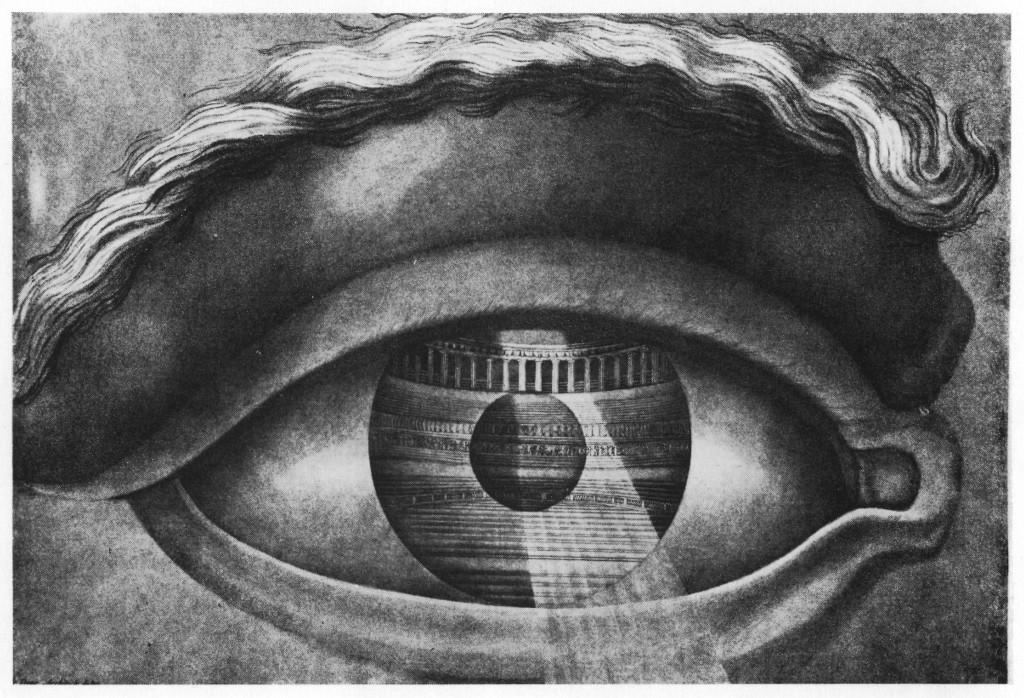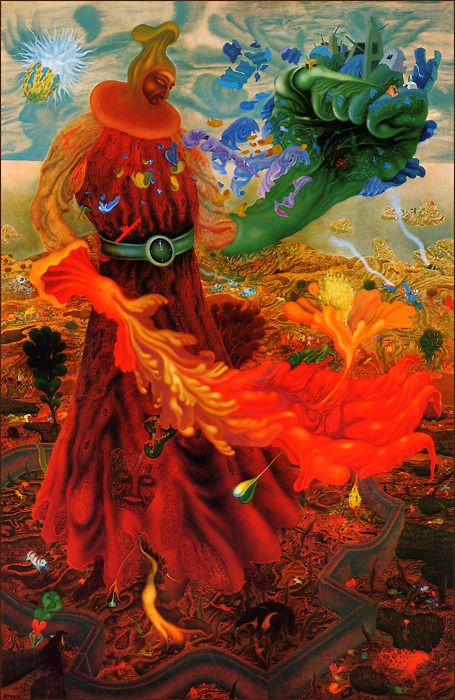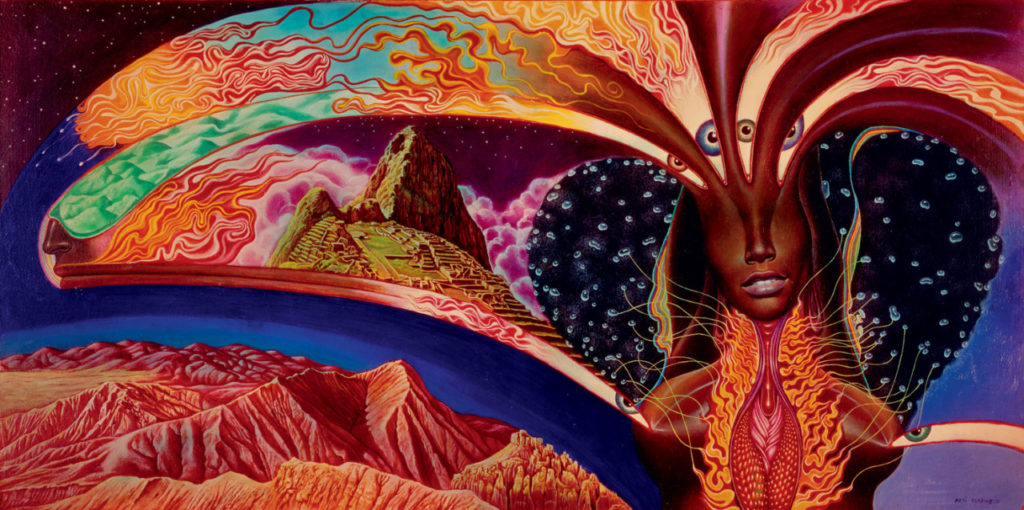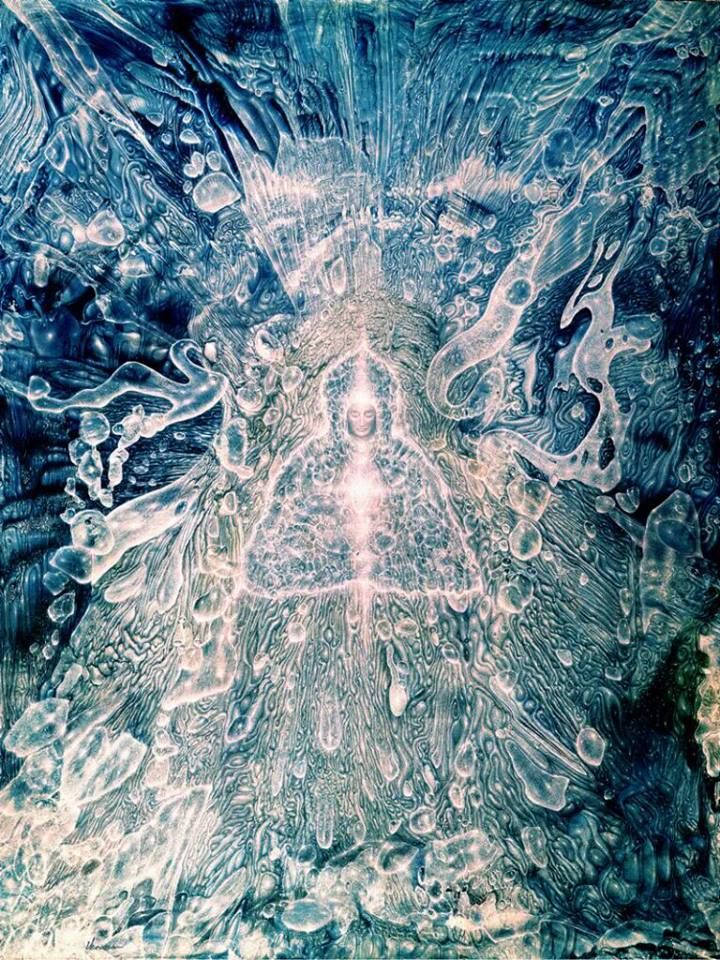
But underneath it, behind it, underground and, perhaps, over it’s head: away from the establishment, people were still painting. Surrealism, out of fashion and too esoteric – some say that Hitler’s interest in Esotericism is what caused the rest of the world to turn up its collective nose – received a tremendous kick in the pants with the advent of the psychedelic age and the 60s transforming into Psychedelic Art and Fantastic Realism. Both branches eschewed the art institution in favor of lineages of thought and process passed down via masters to students and discovered through personal exploration. The Art World tried to push it aside calling it out-dated, trite, and claiming, once again, that painting was dead (as it does every 20 years or so when it gets lazy and tired).

Yet, I challenge the art world with this thought: was the subsequently excluded post-Surrealist art simply too difficult to digest? It challenged the alcohol soused art critic. It wasn’t easy to talk about. It took time and it took energy to engage with it. It wasn’t something as simple as a Cambell’s soup can and so it took effort to understand. And perhaps the beauty it exhibited – the transcendence it spoke of – felt so beyond the art world, that it was easier to push it aside than to engage and see what it had to say.
“During the abstract expressionist epidemic of the fifties, I was dismissed as a latent surrealist illustrator. In the sixties, when the pop art revolution swept the globe with its tidal waves of whimsical garbage, I was scorned as a psychedelic artist – especially when seen in the company of Tim Leary – too close to LSD for the straight culture-vultures of Madison Avenue. In the seventies, when conceptualism was the magic word (what else is there, anyway?) and a work of art was called a “piece”, I was haughtily snubbed as an old-fashioned easel painter from Montmartre.”
– Mati Klarwein http://www.matiklarweinart.com/en/mati-klarwein-interview.htm
Artists like Mati Klarwein, Ernst Fuchs, Erich Brauer, and others created masterpieces that didn’t just revel in the absurdity of the Surrealists but took the viewer into mystical reveries with a hard focus on beauty and skill. Their work – intensely colored, bold, coupling realism with abstraction with spiritualism was shunned by the establishment. It was made by hippies. Artists involved were generally blacklisted from the ivory walled and sterile art world.

On the heels of the psychedelic visionaries, came artists like Robert Venosa, Alex Grey, and Martina Hoffmann – transforming the sometimes naive and meandering transcendence of the Psychedelic Arts into something both unforgettably human and non-human – personal and universal – mystical and very very real. It is here that we see the transition to an art that truly encounters and embraces the mystical, peers beneath the layers to the what is an does it’s best to share something of that with the rest of the world. This is Artist as Mystic, as cultural seer, as visionary.

The great Visionary Artists of today creating masterworks of transcendent beauty – myself, Amanda Sage, Andrew Jones, and many many others – report that their pieces come about not just through careful thought and dedicated practice, but from the living and being awareness of the human experience. The technical proficiency, the mastery, and the thoughtfulness that the artwork requires means that the artists themselves are often transformed in the process. These artists report that art is, to them, a meditative practice and they approach it as a mirror reflecting where they’re at emotionally, psychologically, and spiritually. To push the art through darkness, boredom, intellectualization, through the warp and woof emotional states and bring it to beauty, to transcendence, they are, essentially, creating mirrors of the human experience.
These paintings: born out of living lives of personal exploration, are in direct conversation with the personal and present expressions of the Symbolists and Expressionists and Futurists and Surrealists and, most importantly, with other humans. They challenge the Modern Contemporary Art paradigm and it’s one-ups-man-ship superficiality. They say: there’s more to explore. Thse mirrors of human experience ask the viewer to engage with them, sometimes gently and sometimes forcibly. But always, in the end, with a kind of illuminated light that perhaps we can call love. These are not lazy arts by lazy artists hanging a canvas with a tear in the middle on the wall and calling it a day. These are works by active participants in the NOW.
And so we return to the relationship between artist and viewer. The Visionary Art that we see – the resplendent and transformative pictures that are being created today – allow the viewer to step into a direct relationship with themselves. It doesn’t require intellectualized ideas and pomp and circumstance to make it mean something. The best pieces – the masterworks of these artists – can be looked at as actual equations of our relationship to the divine.
It.s my hope for the future that these paintings give humans some point of connection with themselves and each other in an increasingly disconnected and commoditized world, that they are a touchstone for the sensation of humans living life. It is my hope that they will remind people of who they are, who they want to be, and the fact that we all – each of us – has that potential within us and it is up to us to nurture it.